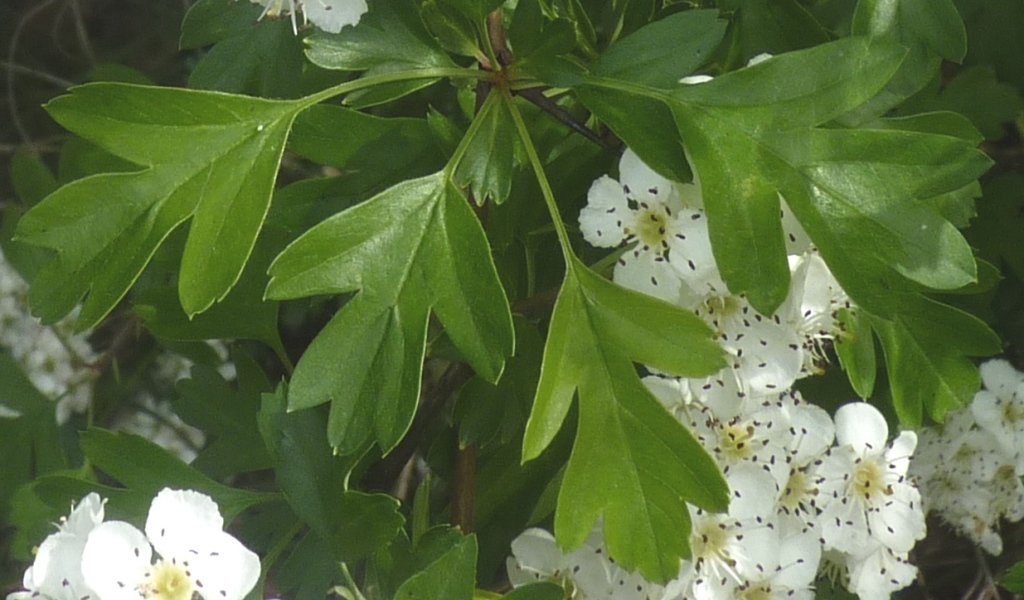Crataegus monogyna
Jacq. HawthornDeciduous shrub or small tree to c. 10 m tall; stems glabrous to villous, usually armed with spines to c. 24 mm long. Leaves simple, rhombic to obovate, mostly 1–6 cm long, 1–6 cm wide, base cuneate, apex usually 3–7-lobed, lobes divergent and often cuneate, margins toothed, both surfaces glabrescent, veins on lower surface villous; petiole 5–50 mm long; stipules large, leafy. Flowers fragrant; pedicels glabrous below, often villous near base of hypanthium. Sepals narrowly triangular, 1.2–4.4 mm long, usually glabrous, deflexed; petals 3–7 mm long, white or pink; carpel 1, style usually 1. Pome sub-globose, 5–10 mm diam., glabrescent, bright red to dark red; pyrene usually 1. Flowers Oct.–Dec.
Wim, GleP, VVP, VRiv, MuF, GipP, OtP, WaP, Gold, CVU, GGr, DunT, NIS, EGL, EGU, HSF, HNF, OtR, Strz, MonT, VAlp. Also naturalised SA, Qld, NSW, ACT. Tas. Native of Europe. A widely cultivated hedge plant and ornamental that has become naturalised at a number of localities, particularly in riparian sites.
Franco (1968) recognized 6 subspecies of Crataegus monogyna. Plants naturalised in Victoria appears to be a mixture of the subsp. monogyna (petiole 5–15 mm long, hypanthium glabrous) and the subsp. nordica Franco (petiole 20–25 mm long, hypanthium villous) but positive identification to subspecies level is only possible from fresh material with flowers and fruits.
Jeanes, J.A.; Jobson, P.C. (1996). Rosaceae. In: Walsh, N.G.; Entwisle, T.J., Flora of Victoria Vol. 3, Dicotyledons Winteraceae to Myrtaceae, pp. 556–585. Inkata Press, Melbourne.
 Spinning
Spinning


